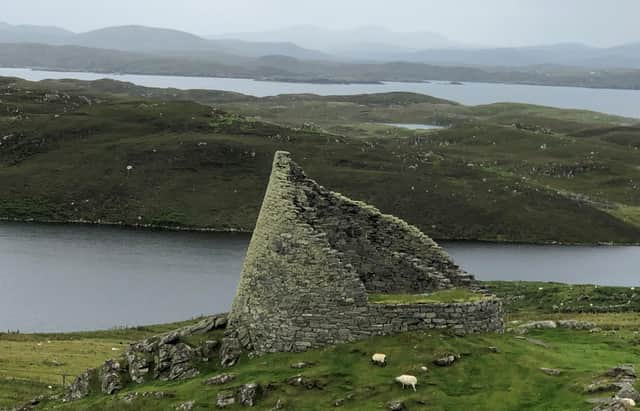Scotland and England 'culturally different' long before Hadrian's Wall, research finds


Archaeologist Ronan Toolis has examined the geographical scatter of ancient dwellings – from brochs, duns, crannogs and souterrains – which were built between 4th and 2nd Century BC.
Advertisement
Hide AdAdvertisement
Hide AdDr Toolis said Hadrian’s Wall was often blamed for severing society but that that cultural differences closely followed the line of the Anglo-Scottish border and were observed long before the Romans arrived.
Dr Toolis said: “The underlying implication of the settlement distribution patterns is that Iron Age societies across Scotland were open to the building and occupation of brochs, crannogs, duns and souterrains but that Iron Age societies further south were not.
“This was the result of cultural choices taken by households and communities, not environmental constraints, and suggests that Iron Age societies north and south of the Tweed–Solway zone were perceptibly dissimilar.’
He said the emergence of an “anarchic” Iron Age society in Scotland, now increasingly recognised as being made up of autonomous households and communities with limited leadership, may have been partly why the Romans failed to absorb Scotland into their empires, despite three separate invasions.
Meanwhile, tribal kingdoms encountered by the Romans to the south were more easily absorbed into the empire’s way of doing things, Dr Toolis added.
Clear evidence for the adoption of Roman culture does not occur in Scotland until the 5th century AD, after the Romans had abandoned Britain, when secular as well as ecclesiastical Latin inscribed stones, bearing Latinised names of indigenous inhabitants and Christian terminology and symbols, appeared across southern Scotland.
Dr Toolis said: “This only occurred when Iron Age society in Scotland had become hierarchical. The evidence implies that far from being passive participants in acculturation, it was only with their active participation and likely at their own instigation and on their own terms, that communities in Scotland truly adopted aspects of Roman culture.”
The research found that some cultural affinity existed across the border, with regional variations found within Scotland itself.
Advertisement
Hide AdAdvertisement
Hide AdDr Toolis pointed to Pictish symbols, whether carved on stone or inscribed upon artefacts like massive silver chains and silver ornaments, which are only found in Scotland.
While these are overwhelmingly concentrated north of the Forth, they are also encountered within non-Pictish contexts to the south and west in the Lothians, Lanarkshire and Galloway, such as at Trusty’s Hill fort near Castle Douglas.
Massive silver chains found north of the Forth but not south of the Tweed and Solway showed a shared approach in the show of power and prestige among the Britons of southern Scotland and the icts of northern Scotland.
However, they were not apparent among the Britons, Angles and Saxons of England and Wales.
Dr Toolis added: “Just as it is possible for local patterns to be distinguished from regional trends in Iron Age culture in Scotland, so too is it possible to recognise national trends.
"However, culture should not be conflated with identity. The peoples of early medieval Scotland may have separately identified as Britons, Picts and Scots but they nevertheless shared cultural traits unique to Scotland.”
